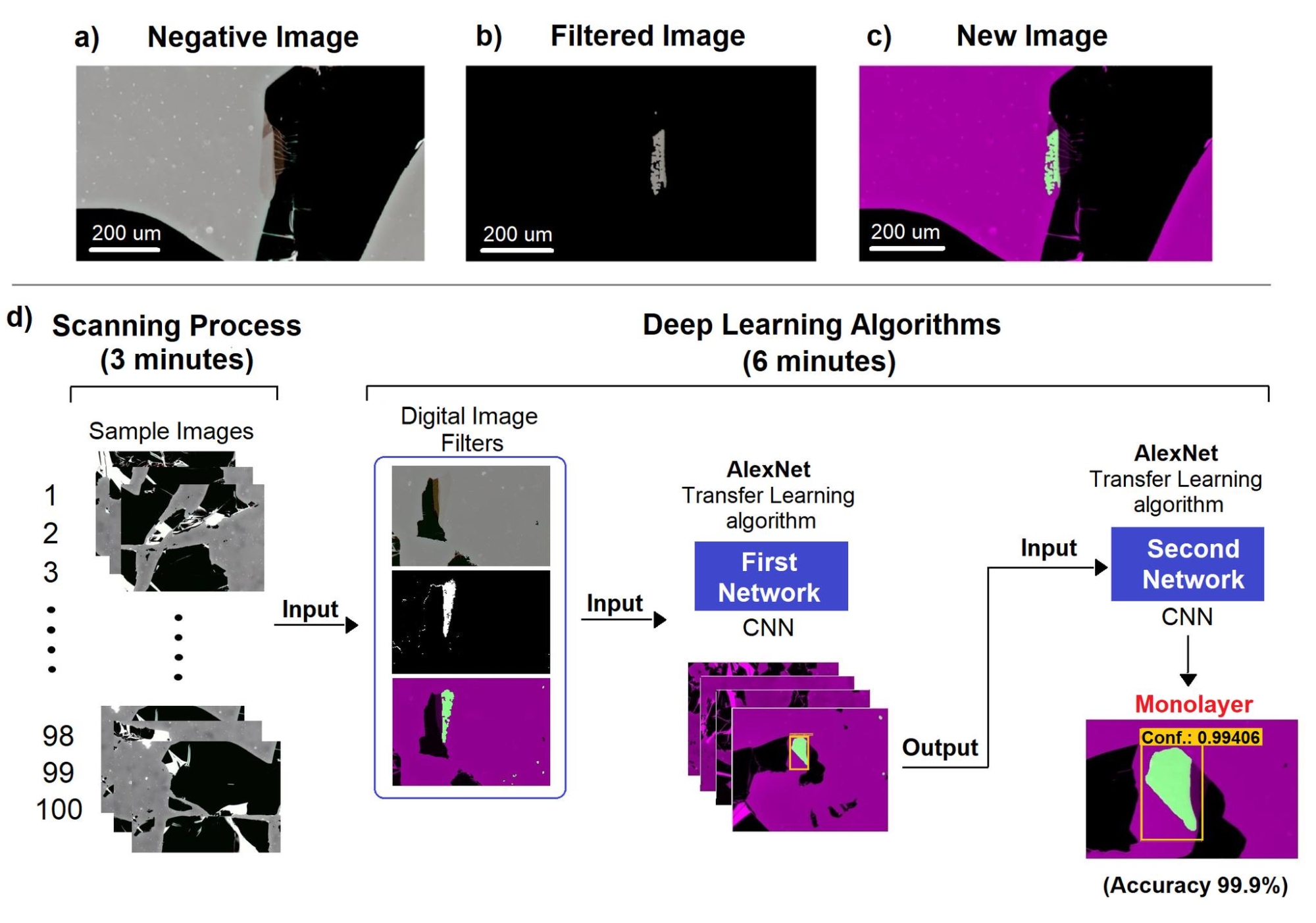Automated System for the Detection of 2D Materials Using Digital Image Processing and Deep Learning

The unique properties of two-dimensional materials for light emission, detection, and modulation make them ideal for integrated photonic devices. However, identifying if the films are indeed monolayers is a time-consuming process even for well-trained operators.
We develop an intelligent algorithm to detect monolayers of WSe2, MoS2 and h-BN autonomously using Digital Image Processing and Deep Learning with high accuracy rate, avoiding human interaction and any additional characterization tests.
The next image shows the methodology developed in this research. (a) First the sample is image using the negative form. (b) Shows the same negative image after the threshold segmentation mask to isolate the monolayer. (c) To improve the monolayer detection, we combine these two images (a and b) and create a new filtered image. This new image separates the monolayer location (green color) from the bulk crystal (black color) and the background (purple color) making it easier to classify it within the image. (d) We show the complete detection methodology using the two convolutional neural networks (CNNs). First, the sample (1 cm x 1 cm) is imaged autonomously taking 100 images. This batch of images is passed through the digital image filters. After the deep learning algorithm, the system detects the monolayer characteristics (pattern) compared with its training data identifying just the monolayer images with 99.9% of accuracy. The complete process (image acquisition through detection) requires nine minutes to be completed.
PAPER
Sanchez-Juarez, M. Granados-Baez, A. A. Aguilar-Lasserre, and J. Cardenas, “Automated system for the detection of 2D materials using digital image processing and deep learning,” Opt. Mater. Express 12, 1856 (2022). https://doi.org/10.1364/OME.454314



